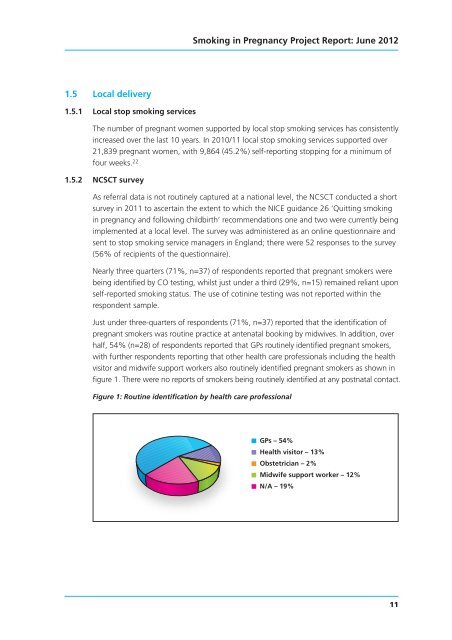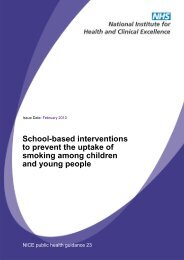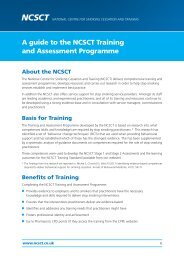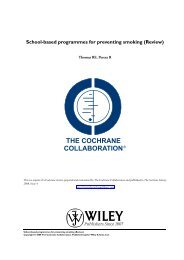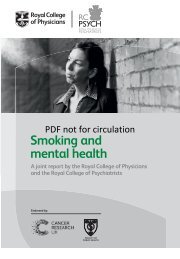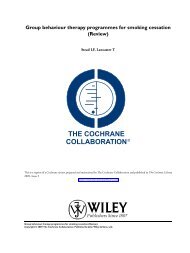published
published
published
You also want an ePaper? Increase the reach of your titles
YUMPU automatically turns print PDFs into web optimized ePapers that Google loves.
Smoking in Pregnancy Project Report: June 2012<br />
1.5 Local delivery<br />
1.5.1 Local stop smoking services<br />
The number of pregnant women supported by local stop smoking services has consistently<br />
increased over the last 10 years. In 2010/11 local stop smoking services supported over<br />
21,839 pregnant women, with 9,864 (45.2%) self-reporting stopping for a minimum of<br />
four weeks. 22<br />
1.5.2 NCSCT survey<br />
As referral data is not routinely captured at a national level, the NCSCT conducted a short<br />
survey in 2011 to ascertain the extent to which the NICE guidance 26 ‘Quitting smoking<br />
in pregnancy and following childbirth’ recommendations one and two were currently being<br />
implemented at a local level. The survey was administered as an online questionnaire and<br />
sent to stop smoking service managers in England; there were 52 responses to the survey<br />
(56% of recipients of the questionnaire).<br />
Nearly three quarters (71%, n=37) of respondents reported that pregnant smokers were<br />
being identified by CO testing, whilst just under a third (29%, n=15) remained reliant upon<br />
self-reported smoking status. The use of cotinine testing was not reported within the<br />
respondent sample.<br />
Just under three-quarters of respondents (71%, n=37) reported that the identification of<br />
pregnant smokers was routine practice at antenatal booking by midwives. In addition, over<br />
half, 54% (n=28) of respondents reported that GPs routinely identified pregnant smokers,<br />
with further respondents reporting that other health care professionals including the health<br />
visitor and midwife support workers also routinely identified pregnant smokers as shown in<br />
figure 1. There were no reports of smokers being routinely identified at any postnatal contact.<br />
Figure 1: Routine identification by health care professional<br />
GPs – 54%<br />
Health visitor – 13%<br />
Obstetrician – 2%<br />
Midwife support worker – 12%<br />
N/A – 19%<br />
11


